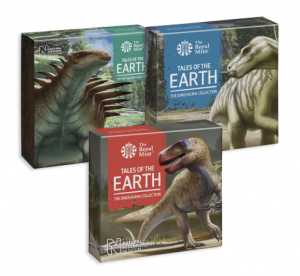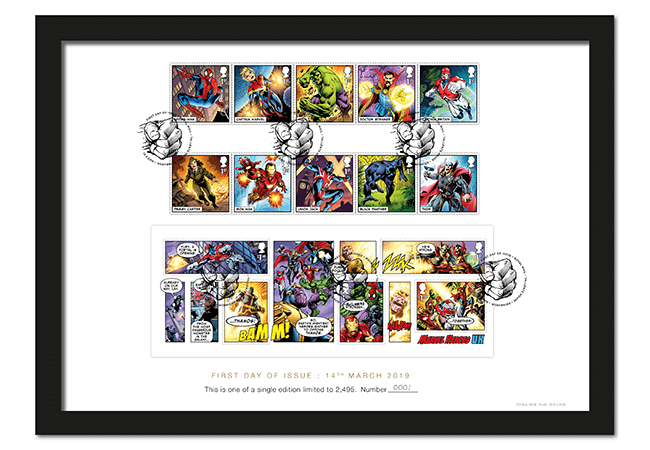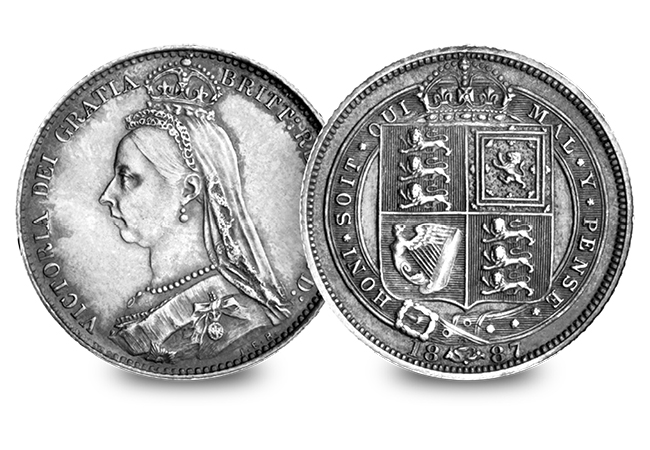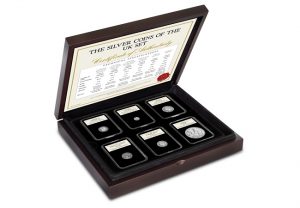By Theme
Uncovering the British discoveries that inspired the Dinosaur 50p coins
I’ve always loved dinosaurs. As a child I’d be glued to the TV watching The Land Before Time and Jurassic Park, and I lost count of the number of family outings to the Jurassic Coast just so I could comb the beaches looking for fossils – I found a few ammonites, but alas no dinosaur bones!
The fact that their time on Earth remains mostly a mystery has fuelled our fascination with them for years. So, I’m sure many collectors shared my excitement when The Royal Mint announced a new UK 50p coin series dedicated to the celebration of dinosaurs. And if you’re a dinosaur enthusiast like me, I’m sure you’ll appreciate the special design details of these coins, that pay tribute to the British discoveries at every possible turn…
Dinosauria
What you may not know is that whilst fossils have been found on every continent on Earth, the study of dinosaurs actually started right here in the UK. In fact, over 50 to 60 species have been discovered beneath out feet.
The term ‘dinosaur’ that we use today comes from the term ‘Dinosauria’, which was coined by British Anatomist Richard Owen in a paper published in 1842. Owen was the first to realise that the remains of three creatures found in various locations within the UK shared common characteristics.
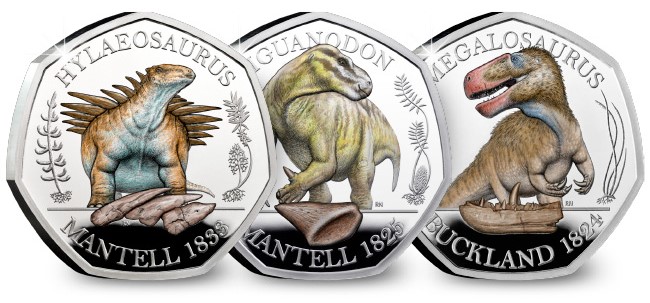
To celebrate Owen’s ground-breaking conclusion, the first three creatures that led him to his discovery have been featured on a UK 50p. Issued in collaboration with the Natural History Museum each one has been expertly brought-back to life by palaeo-artist Robert Nicholls.
Megalosaurus
Megalosaurus comes from the Greek for ‘great lizard’, and at seven to eight metres long it certainly lives up to its name! In terms of its appearance it can be compared to a T-Rex and comes from the same family of large carnivorous dinosaurs that can walk on two legs.
The Megalosaurus is the first dinosaur to ever be officially named in scientific literature. It’s thought that the earliest evidence of a Megalosaurus was found as early as the 17th century, but it wasn’t until years after it was first discovered that it was termed a dinosaur.
It was in 1824 that palaeontologist William Buckland produced the first scientific description of a Megalosaurus, based on fragments of jaw and bone found in Oxfordshire. This is the first non-aviation dinosaur to be formally named.
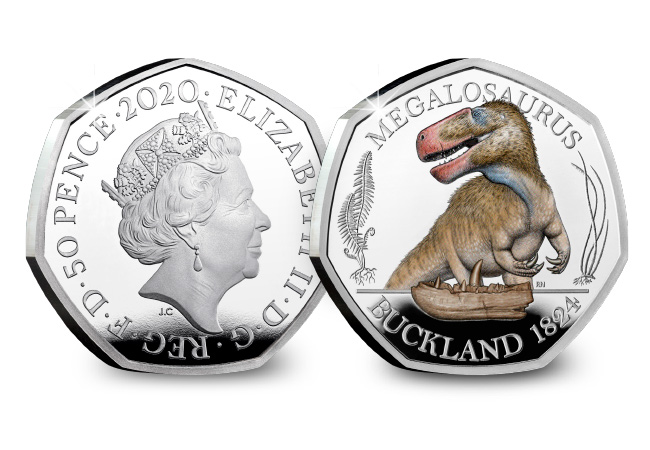
You’ll notice on the 50p coin that the Megalosaurus is framed by a jaw fragment, as a nod to the fossil that gave Buckland his breakthrough. Likewise, Buckland is featured, as is the year of the discovery, 1824.
Iguanodon
It was in 1822 that Mary Mantell spied a large tooth at the side of the road in Sussex, and upon pulling over realised it belonged to an unknown creature. Her husband, Geologist Dr Gideon Mantell, noticed that the tooth was similar to that of an iguana, and later in 1825 came to call it an Iguanodon. This was the second dinosaur species to receive its name.
It wasn’t until several years later in 1834, when an explosion in Maidstone revealed fragments of an ancient skeleton that Mantell could conceptualise what an Iguanodon may have looked like.
As well as distinctive iguana-like teeth, other distinctive features of an Iguanodon include its large thumb spikes, which were possibly used for defence against predators, combined with long fifth fingers capable of grasping, allowing them to forage for food. The creatures belong to the dinosaur family of medium-sized herbivores that usually walked on two legs.
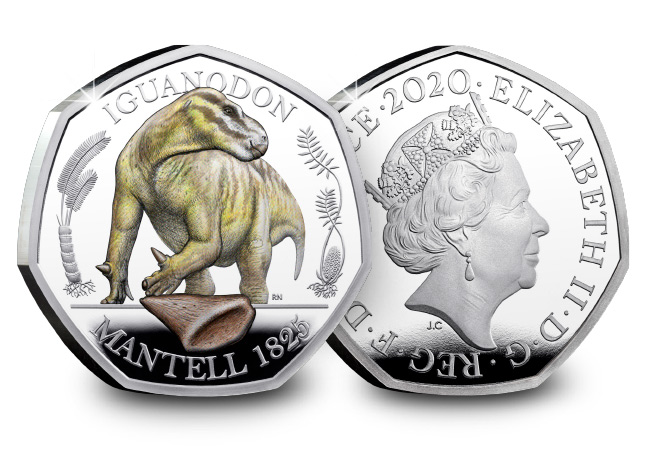
You’ll see that the 50p design credits Mantell with the discovery in 1825, and also depicts the tooth that originally sparked the naming of the creature as an Iguanodon.
Hylaeosaurus
And last, but no means least is the Hylaeosaurus, the third dinosaur to be officially discovered and scientifically named.
Out of the three first dinosaurs to be discovered, it is the Hylaeosaurus’ anatomy that we know the least about as little remains have been uncovered. It is thought that the Hylaeosaurus was a herbivorous, armoured creature, around five meters long with spikes along its back. Its name means ‘woodland lizard’ and is in the same family as the Stegosaurus.
It was again Dr Gideon Mantell who can be credited with the discovery of the Hylaeosaurus. The first remains of the creature were found in Sussex in 1832, and astonished Mantell because the discovery was the most complete non-aviation dinosaur skeleton known at the time. The discovery included several spikes and armour plates, for which this dinosaur is now known. But it wasn’t until 1833 that Mantell published his findings, and the creature was officially named Hylaeosaurus.
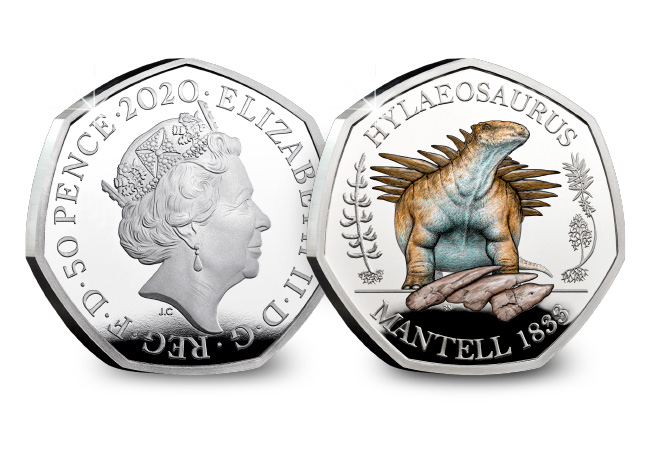
The design of the 50p again incorporates important details about the discovery of the Hylaeosaurus. You’ll see Mantell is noted alongside the year of discovery, 1833, and the initial spikes that were discovered as part of the first skeleton.
If you’re interested…
The Dinosaur 50p series has proven tremendously popular with collectors, not least because this is the first time dinosaurs have ever featured on UK coinage. That said, it’s been the Coloured Silver Proof 50ps that have stolen the show.
We’re lucky to be able to offer a select number of collectors the chance to secure the Complete Silver Dinosaur 50p Collection today. Importantly, we’ve seen precious metal sell-outs across the range, so this is likely to be your only opportunity to secure ALL THREE Dinosaur 50ps in superior Silver Proof quality. Click here to find out more >>
FIRST LOOK: NEW ‘Super’ MARVEL Stamps just revealed
Revealed for the first time today, Royal Mail are set to release 15 new MARVEL stamps, to celebrate 80 years since the founding of MARVEL Comics, and its irrefutable impact on British culture.
Scheduled for release on 14 March 2019, the new stamps will feature 10 of the best loved characters from Marvel’s illustrious history, including Spider-Man, Iron Man, Hulk, Thor, Black Panther, and Doctor Strange, as well as an exclusive Miniature Sheet like no other – five bonus Marvel stamps that form part of a ten-panel never-before-seen comic book strip in which the Mad Titan, Thanos, launches a deadly attack on the world.
The stamps are Royal Mail’s first ever MARVEL Comics stamp issue, and are likely to prove immensely popular with the British public, and collectors throughout the world!
Here’s your first look at the new stamps alongside a bit of info about each one…
Spider-Man

Peter Parker is Spider-Man, New York’s amazing web-slinging hero. Bitten by a radioactive spider as a teenager, Peter Parker gained arachnid-like abilities and, after his Uncle Ben was murdered, swore to use his abilities to help others – having realised that with great power comes great responsibility.
Captain Marvel
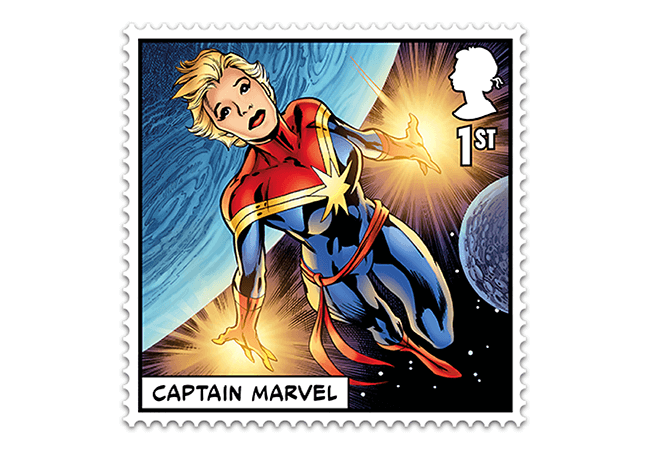
Carol Danvers was an Air Force officer when she met Kree hero Captain Mar-vell. After her DNA mixed with his during an explosion, she gained super powers and took the name Ms Marvel. Following the original’s death, Carol took on the mantle of Captain Marvel to honour his legacy.
Hulk
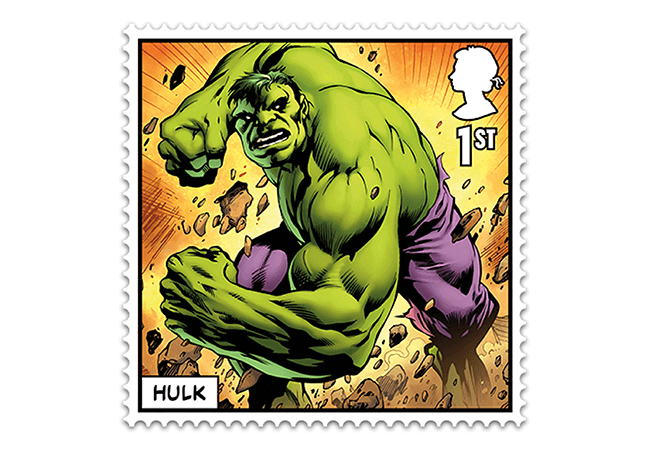
When mild-mannered scientist Bruce Banner was bombarded by radiation from a gamma bomb, he was transformed into the incredible Hulk. The green-skinned behemoth is one of the planet’s most powerful and misunderstood heroes – feared by a world he has saved numerous times.
Captain Britain
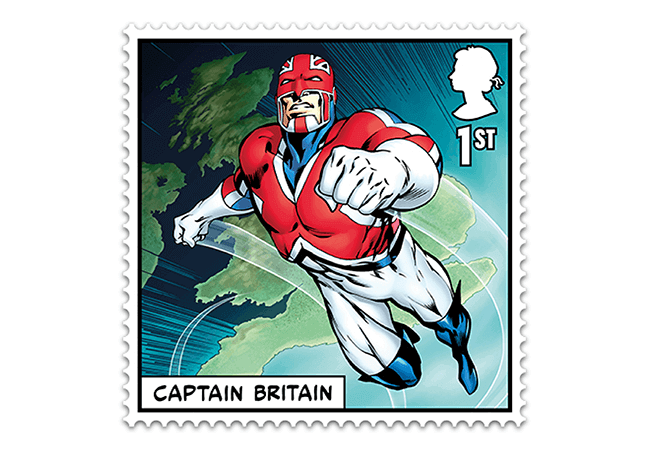
Brian Braddock was chosen by Merlyn to be Britain’s greatest protector. Granted amazing powers, Brian became Captain Britain. He soon learned he was part of a multidimensional Captain Britain Corps and has fought alongside Excalibur and the Avengers to keep his country – and the world – safe from harm.
Doctor Strange
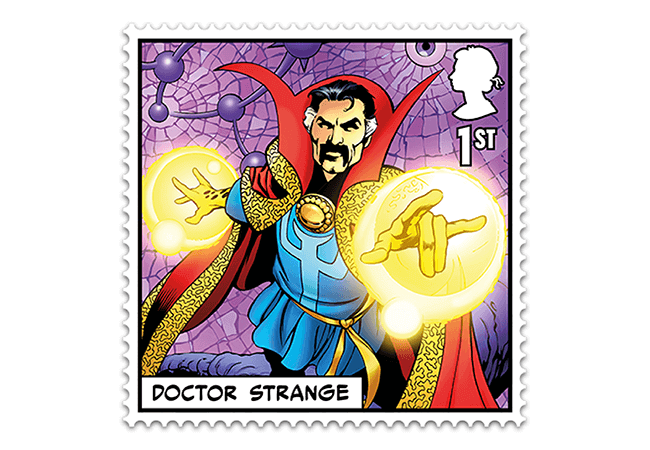
Once a brilliant yet vain surgeon, Stephen Strange sought out the help of the Ancient One when his hands were badly damaged in a car crash. Strange’s path led him to become a Master of the Mystic Arts and Earth’s Sorcerer Supreme, protecting the world from evil forces.
Peggy Carter
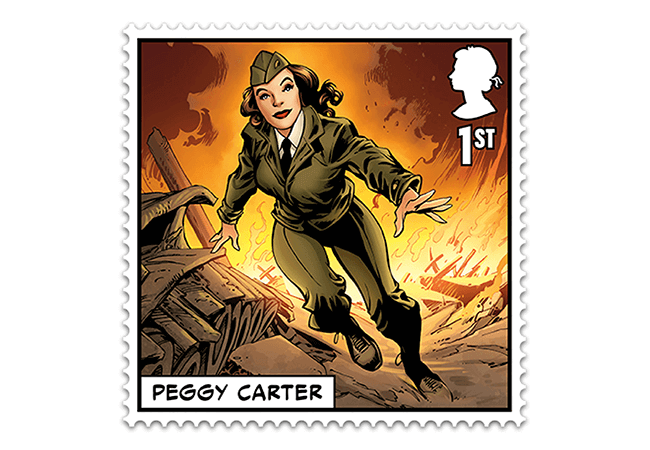
Peggy Carter was working for the French Resistance in the Second World War when she met and fell in love with Captain America. The two fought the Axis powers together before they were separated by the war. Peggy went on to become a leading agent of S.H.I.E.L.D. (Strategic Homeland Intervention, Enforcement and Logistics Division).
Iron Man
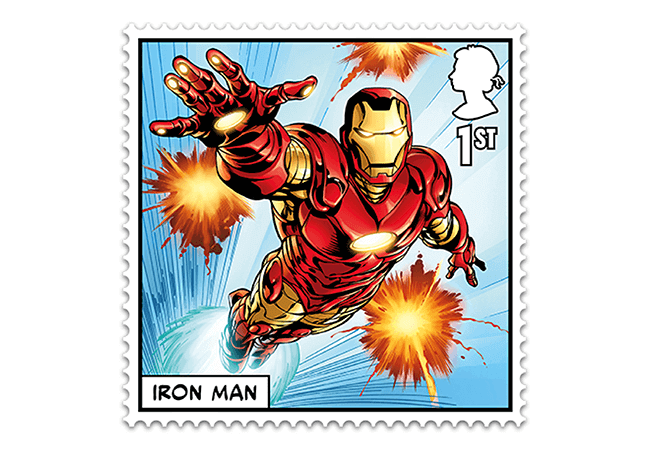
When terrorists captured billionaire inventor Tony Stark, they forced him to create weapons. With shrapnel near Stark’s heart endangering his life, Stark tricked the terrorists, building a suit of powered armour to defeat them. It was the birth of the armoured Avenger – the invincible Iron Man.
Union Jack
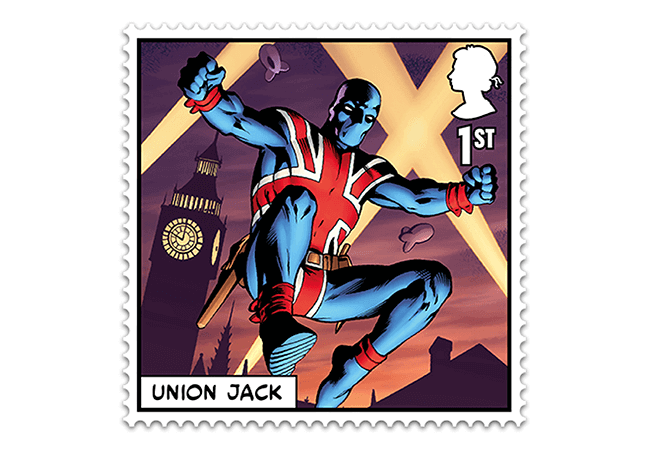
The original Union Jack was Lord James Falsworth, who fought in the First World War. When his descendant refused to take on the role, the mantle was passed to Joey Chapman, a working-class hero from Manchester, who has gone to fight alongside the Knights of Pendragon and the Invaders.
Black Panther
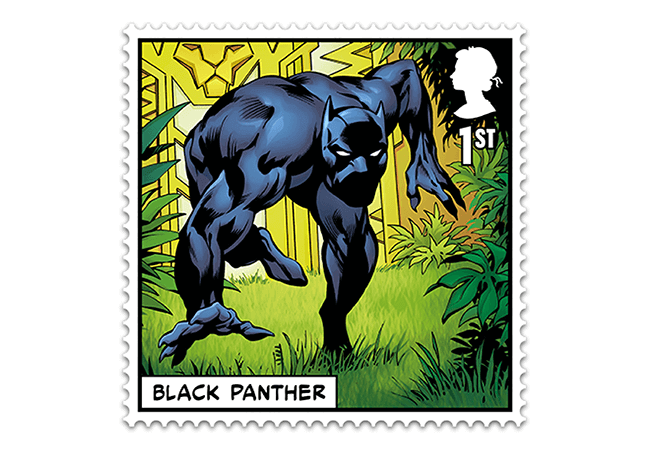
T’Challa is the Black Panther, ruler of the technologically advanced African nation of Wakanda and protector of its valuable vibranium supply. T’Challa first travelled to America to learn more about that country’s heroes and soon became a leading member of the Avengers.
Thor
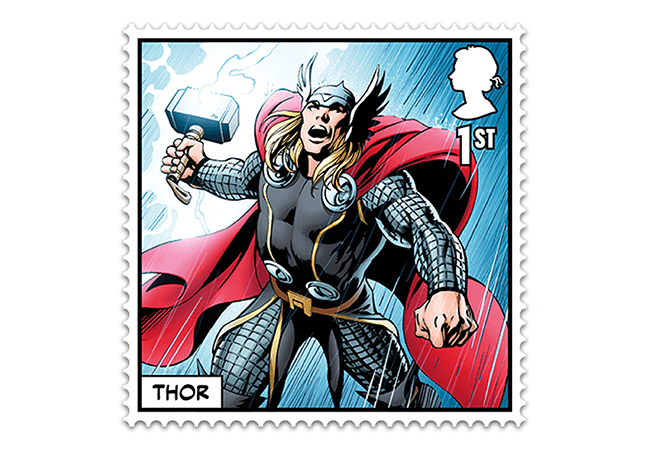
Thor is the Norse God of Thunder. Once cast out of Asgard for his pride, he was trapped on Earth as the injured doctor, Donald Blake. Thor’s banishment is long ended and now he protects both Earth and Asgard as an Avenger.
The new and official UK MARVEL Stamps are sure to be a [HULK] SMASH with collectors
Generations have grown up with these timeless superheroes in comic books and more recently in hugely successful movies, and Royal Mail are celebrating this beloved pop-culture theme with original artwork by renowned British illustrator Alan Davis – long-time artist for MARVEL Comics.
Many of the classic superheroes celebrated in the new stamp issue were created in the 1960s, and in the 1970s a UK MARVEL imprint was created for British fans. ‘Captain Britain Weekly’ was launched in 1976, featuring the adventures of the first MARVEL UK superhero, closely followed by another British character, Union Jack. Both these take their place in the ranks of superheroes in the stamps.
This BRAND NEW set of Royal Mail Stamps are officially licensed and approved by MARVEL and feature a stunning set of 10 First Class stamps in the form of never-seen-before illustrations by renowned MARVEL Comics artist Alan Davis, including an original and exclusive comic book story contained in the miniature sheet, which is sure to be a must have for all MARVEL comic-strip fans and collectors alike.
This original, never-seen-before story with a unique British twist (look out for Trafalgar Square and the Gherkin!) has been specially written and designed by MARVEL and will only ever be available on the Miniature Sheet.
If you’re interested…
You can reserve all of the new MARVEL Comics Stamps right now on a Limited Edition Collector Card – Professionally Framed and ready to hang. Click here for details>>>
Discover 200 years of fascinating UK silver coins…
British coinage has had its fair share of fascinating tales over the years. When searching for coins, I’m always seeking to find classic coins whose numismatic interest and history mean that they will forever be sought-after pieces.
Which is why, with the help of my UK coin specialist, I’ve decided to narrow down what I believe to be six of the most interesting and collectable UK historic silver coins issued over the past 200 years.
Read below to discover the stories of six coins that cover some of the most important events in British numismatic history – including influential design changes, mistaken introductions and controversial issues.
The Great Recoinage Shilling – George III Bull Head Silver Sixpence
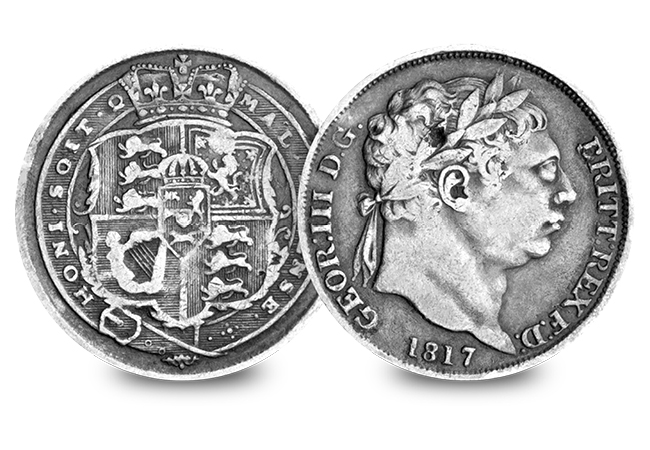
1816 marked one of the most important moments in the history of British coinage – The Great Recoinage. For Georgian Britain, it was a change as big as Decimalisation for you or me. The George III Bull Head Sixpence was introduced as part of an attempt to re-stabilise the currency following economic difficulties caused by both the French Revolutionary and Napoleonic Wars and marks one of the most important moments in British numismatic history.
The Coin of the Colonies – Victoria Silver Three Halfpence
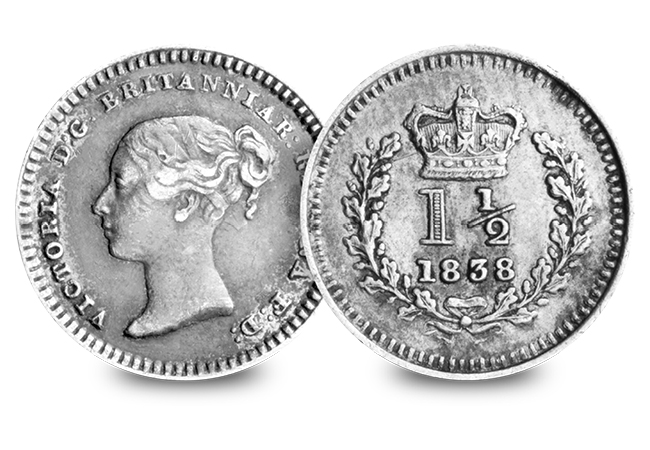
During the 1800s demand grew for British coinage from all across the globe, with over 25% of the world’s population using coins bearing Queen Victoria’s portrait. The British three halfpence was a silver coin produced for circulation in the British colonies with a denomination which had never been seen in mainland Britain before. What makes this coin so interesting is that it has no indication of what country it was minted for, which meant that it could be used across most of the globe!
The Longest ‘Reigning’ Portrait – Victoria Young Head Shilling
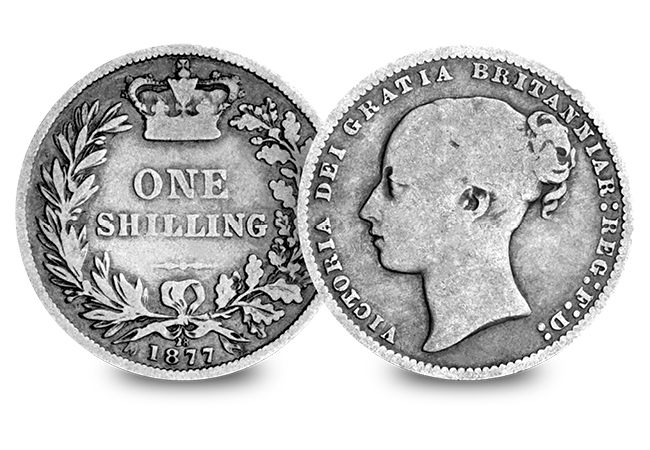
The first effigy to feature on Queen Victoria’s coinage was the Young Head portrait featuring a particularly youthful and charming portrait of the young Queen. The Victoria Shilling featured the Young Head portrait from 1839 to 1887, which is the longest period a single portrait has ever featured on a British circulation coin.
The Withdrawn Sixpence Pair – 1887 Victoria Silver Sixpences
In 1887, new coin designs were issued to mark Queen Victoria’s Golden Jubilee. Surprisingly, the new design of the Silver Sixpence shared the same design as the Gold Half Sovereign. Of course, it didn’t take long for crafty opportunists to start coating the Silver Sixpence in gold paint and passing them off as the far more valuable Half Sovereign. The authorities hastily withdrew the Sixpence and a quick redesign took place with ‘SIX PENCE’ written across the middle of the coin.
The Rocking Horse Crown – 1935 George V Silver Crown
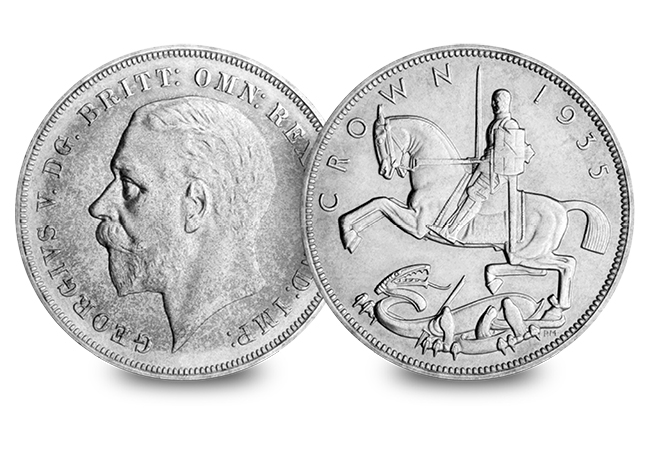
The ‘Rocking Horse’ Crown was issued for just one-year-only in 1935 to celebrate the Silver Jubilee of George V. Significantly, this special Silver Jubilee Crown was the first-time a commemorative crown was ever struck and started what is now one of the most popular numismatic collecting trends ever seen. Despite its significance, this coin caused controversy when it was first issued, with many traditionalists disliking the art deco reinterpretation of the iconic St. George and the Dragon design.
Each of these coins has unique story that makes them all must haves for any collector with an interest in historic UK coins. We’re certainly lucky to live in a nation with such a rich numismatic history!
However, these coins are now historic artefacts in their own right, and considering that many have been melted down over the past two centuries for their valuable silver content, they are now extremely rare.
I’m sure you’ll agree, that considering the fantastic history along with the scarcity of all six of these coins, they can all be considered amongst the most interesting and collectable UK Silver coins of the past 200 years.
If you’re interested…
Understandably, it is extremely difficult to build up a stock of these fascinating coins. But working with my extensive network of suppliers, I have been able to put together 22 sets of these iconic silver coins to now offer to my collectors. But with such limited numbers available you will need to act now if you want to add these fascinating coins to your collection.

